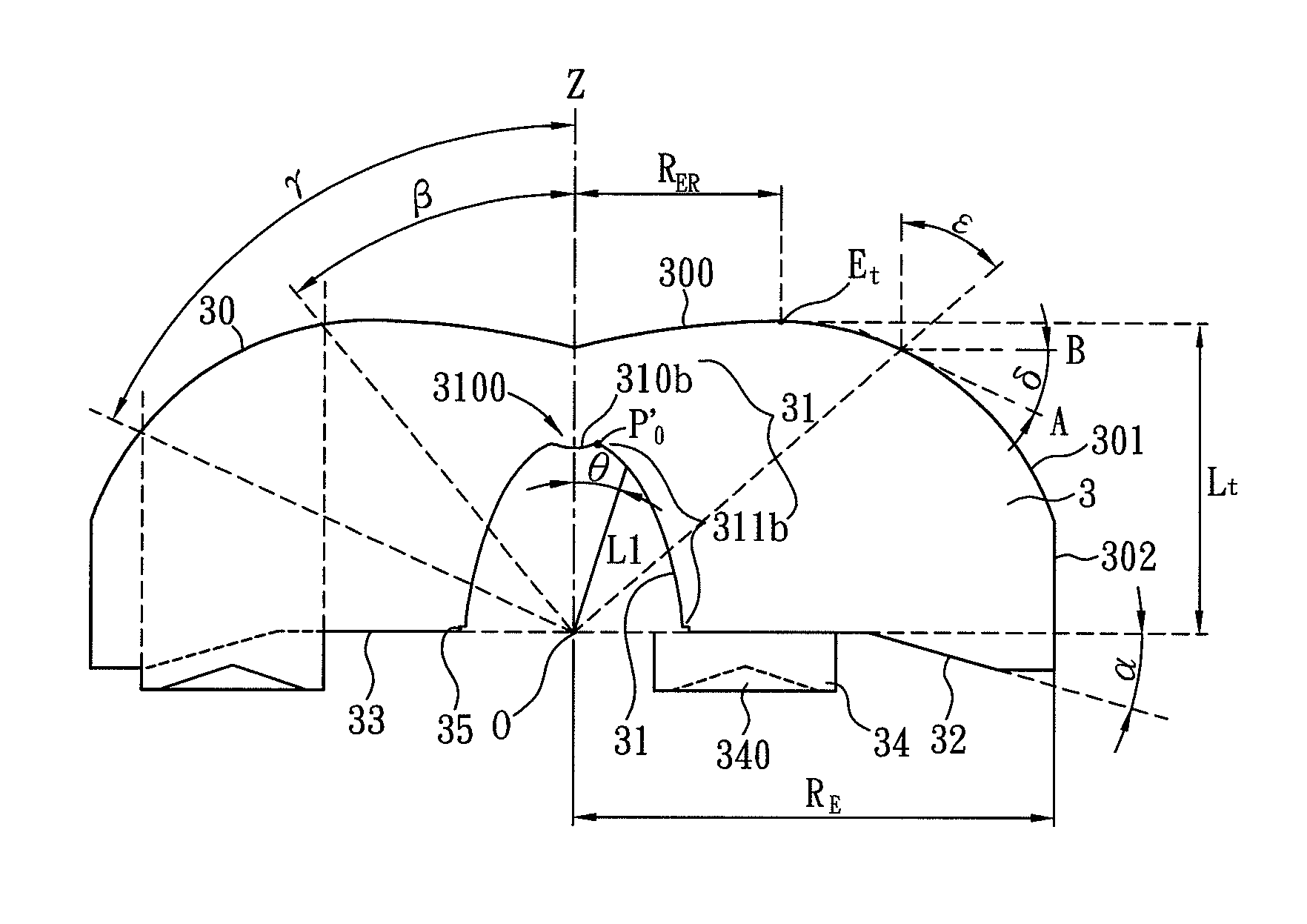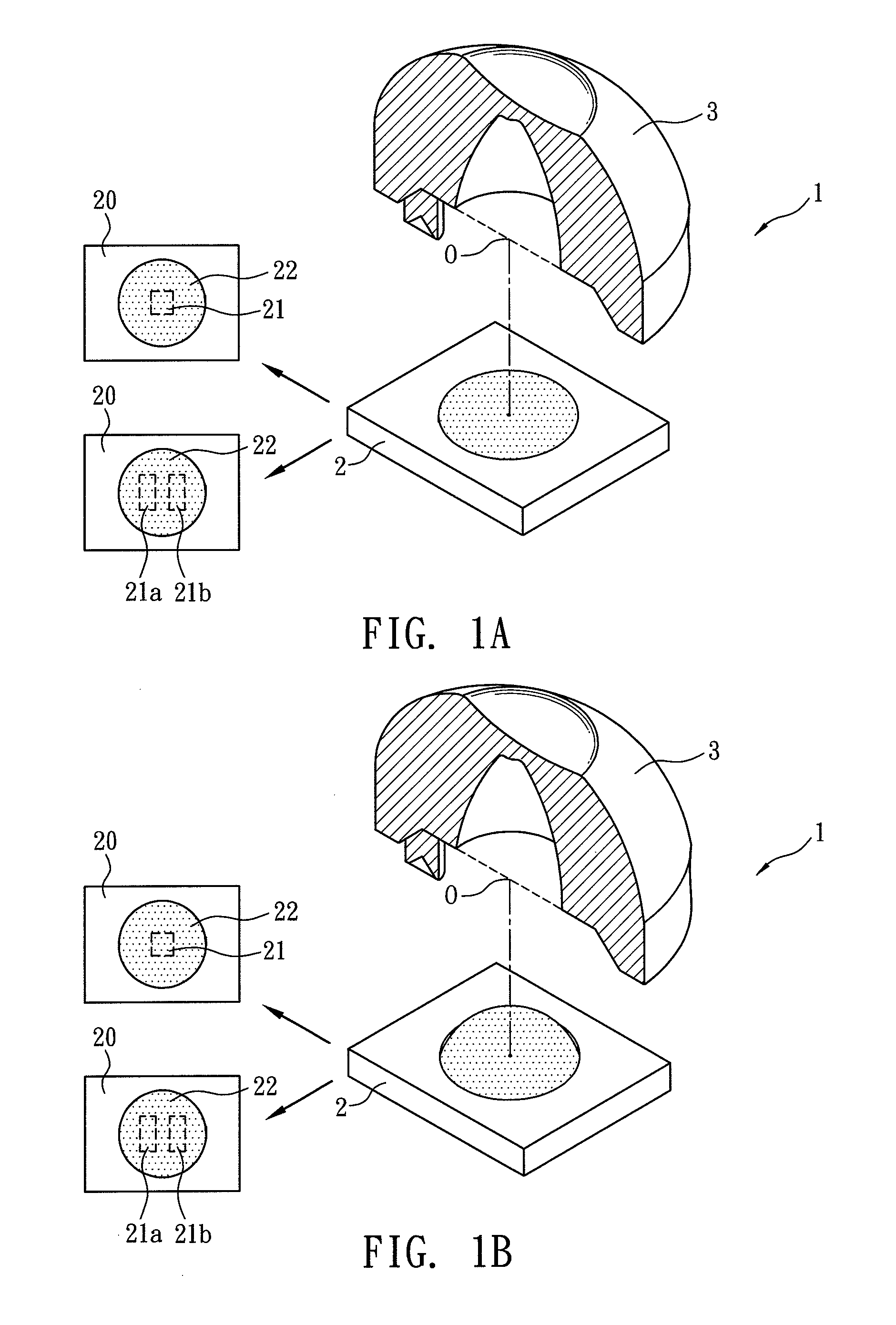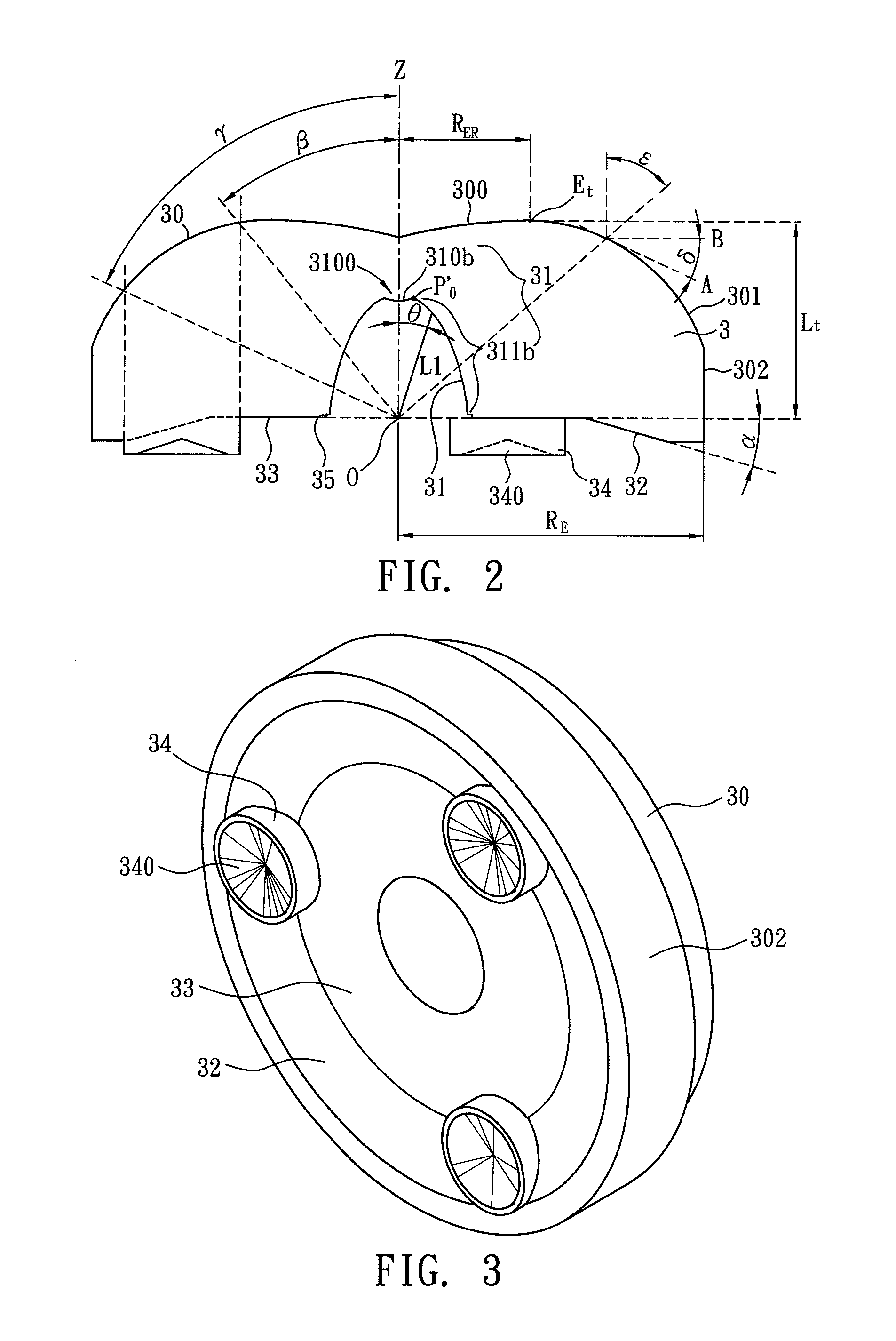Light control lens and light source device using the same
a technology of light source device and lens, applied in the direction of lighting and heating apparatus, semiconductor devices for light sources, instruments, etc., to achieve the effect of effective divergence, improved light utilization efficiency, and improved illumination uniformity
- Summary
- Abstract
- Description
- Claims
- Application Information
AI Technical Summary
Benefits of technology
Problems solved by technology
Method used
Image
Examples
first example
[0062]FIG. 7 is a cross-sectional view illustrating a light source device of the first example according to the present disclosure. In the first example, the light emitting surface 30 of the light control lens 3 has a shape according to table (1) listed below that shows coefficients of the aspherical surface formula (9).
[0063]
TABLE (1)RE0 (mm)KA2A4A6A8A10A12−1.014E−13−1.570E+021.897E−02−1.397E−032.083E−05−4.889E−079.438E−09−9.540E−11
[0064]In Table (2) listed below, it shows the data according to the first example.
[0065]
TABLE (2)LtRERERRiOI0θTθMUα(mm)(mm)(mm)tanθe(mm)(mm)(°)(°)Nd(%)(°)5.117.90033.5781921.497121
[0066]In the first example, the light emitting surface 30 is an aspherical convex surface that has an apex Et at the optical axis Z. As shown in Table (2), the effective radius RE of the light emitting surface 30 is larger than the distance Lt, and the ratio between the distance RER and the effective radius RE satisfies the condition (1). The light incident surface 31 constitut...
second example
[0067]FIG. 8 is a cross-sectional view illustrating a light source device of the second example according to the present disclosure. In the second example, the light emitting surface 30 of the light control lens 3 has a shape according to table (3) listed below that shows coefficients of the aspherical surface formula (9).
[0068]
TABLE (3)RE0 (mm)KA2A4A6A8A10A12−1.558E−13−2.229E+062.013E−02−1.443E−032.083E−05−4.889E−079.438E−09−9.540E−11
[0069]In Table (4) listed below, it shows the data according to the second example.
[0070]
TABLE (4)Lt (mm)RE (mm)RER (mm)tanθetanθkRi (mm)OI0 (mm)4.6947.752.83037.3650.7554.0003.300OP0 (mm)cosθ0θT (°)θM (°)NdU (%)α (°)2.0080.707701561.4987.615
[0071]In the second example, the first recession portion 300 of the light emitting surface 30 is a convex surface dropping from an inner edge of the convex portion 301 toward the light incident surface 31, in which the convex surface of the first recession portion 300 faces toward the incident origin O. As shown in...
third example
[0072]FIG. 9 is a cross-sectional view illustrating a light source device of the third example according to the present disclosure. In the third example, the light emitting surface 30 of the light control lens 3 has a shape according to table (5) listed below that shows coefficients of the aspherical surface formula (9).
[0073]
TABLE (5)RE0 (mm)KA2A4A6A8A10A12A14−1.558E−13−2.975E+041.957E−022.253E−03−2.770E−048.017E−06−4.706E−08−1.562E−091.907E−11
[0074]In Table (6) listed below, it shows the data according to the third example.
[0075]
TABLE (6)Lt (mm)RE (mm)RER (mm)tanθetanθkRi (mm)OI0 (mm)4.2117.752.83016.6640.9553.82.3OP0 (mm)cosθ0θT (°)θM (°)NdU (%)α (°)1.5980.605681501.5381.629
[0076]In the third example, the first recession portion 300 of the light emitting surface 30 is a convex surface dropping from an inner edge of the convex portion 301 toward the light incident surface 31, in which the convex surface of the first recession portion 300 faces toward the incident origin O. As show...
PUM
 Login to View More
Login to View More Abstract
Description
Claims
Application Information
 Login to View More
Login to View More - R&D
- Intellectual Property
- Life Sciences
- Materials
- Tech Scout
- Unparalleled Data Quality
- Higher Quality Content
- 60% Fewer Hallucinations
Browse by: Latest US Patents, China's latest patents, Technical Efficacy Thesaurus, Application Domain, Technology Topic, Popular Technical Reports.
© 2025 PatSnap. All rights reserved.Legal|Privacy policy|Modern Slavery Act Transparency Statement|Sitemap|About US| Contact US: help@patsnap.com



